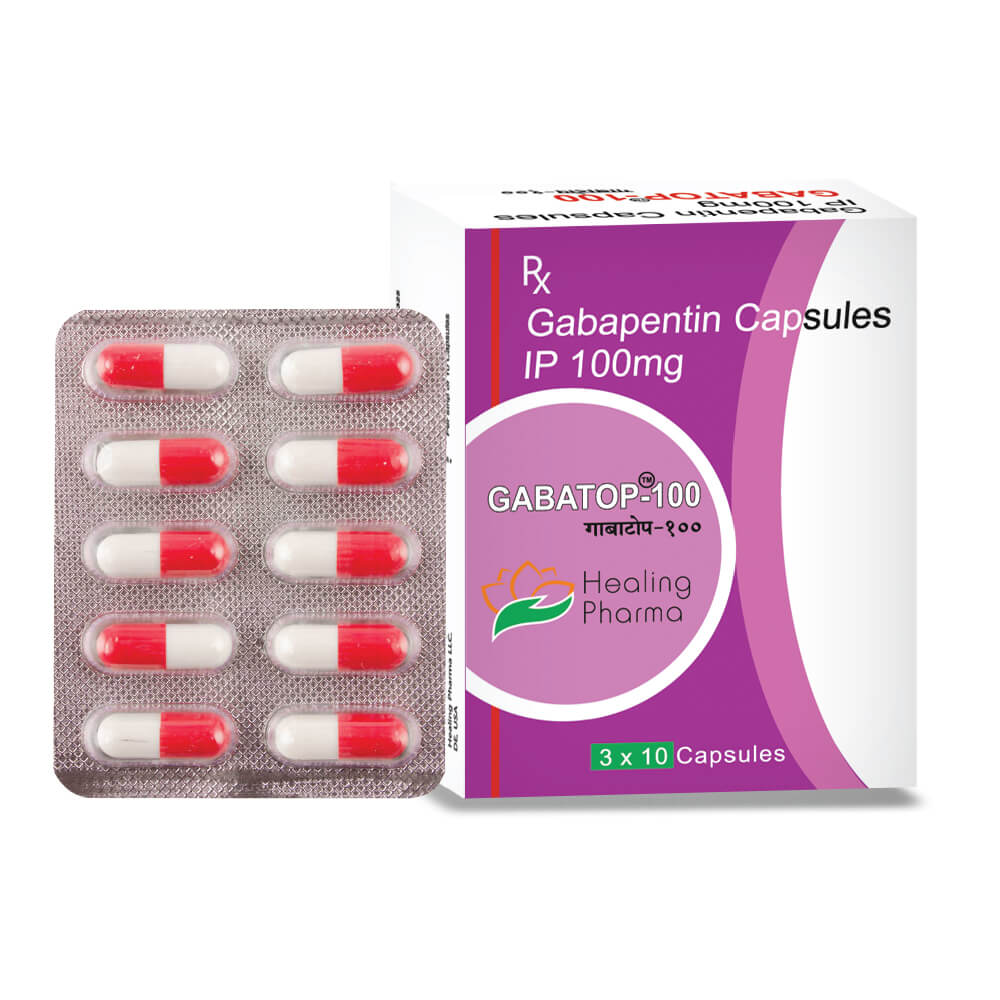Gabapentin, traditionally known under the brand name Neurontin, is a widely used medication in the management of partial seizures. This anticonvulsant drug has been pivotal in the realm of neurological treatments since its inception. Gabapentin 100mg serves as a fundamental therapy for patients suffering from partial seizures, facilitating improved brain function and quality of life. This article delves into the discovery, usage, mechanisms, and potential side effects of Gabapentin 100mg.
Gabapentin 100 mg is a prescription medicine for the treatment of partial seizures, nerve pain from shingles, and restless leg syndrome. The active ingredient in the Gabapentin capsule belongs to a group of medicines called anticonvulsants, which work on the chemical messengers in your brain and nerves.
The Discovery and Development of Gabapentin
Gabapentin was originally discovered in the 1970s by scientists at Parke-Davis, a subsidiary of Warner-Lambert, now a part of Pfizer. The medication’s development was aimed at enhancing the effects of gamma-aminobutyric acid (GABA), an inhibitory neurotransmitter in the brain, to manage epilepsy more effectively. The FDA approved Gabapentin in 1993 for use as an adjunctive therapy for partial seizures in adults and later extended this approval to pediatric use.
Gabapentin 100mg in Clinical Use
Gabapentin 100mg is commonly prescribed as it offers an effective starting dose for patients new to the medication, allowing for an assessment of tolerance and efficacy before potentially increasing the dosage. It plays a significant role in the therapeutic regimen for partial seizures, often in combination with other antiepileptic drugs for a synergistic effect. Additionally, Gabapentin is sometimes utilized off-label for conditions such as neuropathic pain, anxiety, and restless legs syndrome.
Gabapentin Mechanism of Action
The precise mechanism of action of Gabapentin remains not entirely understood, but it is known to influence the way in which nerves send messages to the brain. Gabapentin resembles the structure of the neurotransmitter GABA, though it does not bind to GABA receptors or alter GABA synthesis.
Instead, Gabapentin binds to the alpha-2-delta subunit of voltage-gated calcium channels in neurons. This binding reduces the influx of calcium ions into the nerve cells, which decreases the release of excitatory neurotransmitters like glutamate, norepinephrine, and substance P. This reduction in excitatory neurotransmitter activity alleviates neuronal hyperexcitability, which is a hallmark of epilepsy and partial seizures.
Administration and Dosage of Gabapentin 100mg
Gabapentin 100mg is typically administered as part of a titration schedule, starting with a low dose and gradually increasing until the desired therapeutic effect is achieved. This gradual increase helps mitigate potential side effects and allows healthcare providers to find the optimal dosage for each patient. Gabapentin can be taken with or without food, and the standard dosing schedule ranges from once to three times daily, depending on the specific needs of the patient.
Benefits of Gabapentin 100mg in Seizure Management
Gabapentin provides several benefits for individuals with partial seizures:
- Effective Control: As an adjunctive therapy, Gabapentin 100mg significantly contributes to better seizure control in many patients, reducing the frequency and severity of seizures.
- Neuroprotection: Gabapentin demonstrates neuroprotective properties by stabilizing neuronal membranes and preventing excitotoxicity.
- Improved Quality of Life: By reducing seizure occurrences, Gabapentin 100mg helps patients experience a better quality of life, with fewer disruptions due to seizures.
Gabapentin Side Effects
While Gabapentin is well-tolerated by many patients, it is essential to be aware of potential side effects. Common side effects include dizziness, drowsiness, and peripheral edema. Some patients may also experience fatigue, unsteadiness, and weight gain. Less commonly, Gabapentin may cause mood changes, memory problems, and gastrointestinal issues.
Severe side effects, though rare, can include allergic reactions, difficulty breathing, and severe skin reactions. Patients must communicate any adverse effects to their healthcare provider promptly to manage and mitigate these potential risks.
The Role of Gabapentin in Combination Therapy
Gabapentin 100mg is often used in conjunction with other antiepileptic medications to achieve better seizure control. Combination therapy allows for lower doses of individual drugs, reducing the likelihood of side effects while enhancing the therapeutic effect. This approach is particularly beneficial for patients who do not respond adequately to monotherapy. Combining Gabapentin with other medications such as Lamotrigine, Levetiracetam, or Topiramate can provide a comprehensive treatment strategy, tailored to the specific needs of patients with partial seizures.
Patient Considerations and Safety Information
Before starting Gabapentin therapy, healthcare providers need to evaluate the patient’s medical history, including any previous allergic reactions to medications and existing health conditions. Patients should inform their doctor about all medications they are taking, including over-the-counter drugs and supplements, to prevent potential drug interactions.
It’s also important to follow the prescribed dosing schedule closely to prevent withdrawal symptoms and rebound seizures. Abrupt discontinuation of Gabapentin can result in significant adverse effects, emphasizing the need for a careful and gradual dose reduction under medical supervision when stopping the medication.
Future Directions and Research
The ongoing research and development in the field of anticonvulsant medications continue to expand our understanding of drugs like Gabapentin. Studies are being conducted to refine its use, identify new therapeutic targets, and enhance its efficacy and safety profile. Emerging research focuses on optimizing dosage regimens, reducing side effects, and uncovering additional therapeutic applications beyond seizure management.
The future of Gabapentin therapy remains promising as new insights and advancements are made. Enhanced formulations and novel drug delivery systems could potentially improve patient adherence and therapeutic outcomes, making it an even more valuable tool in managing partial seizures and other neurological conditions.
Conclusion
Gabapentin 100mg has established itself as a cornerstone medication in the management of partial seizures, offering significant benefits in terms of seizure control, neuroprotection, and quality of life. Understanding its mechanisms of action, potential side effects, and the importance of proper dose management is crucial for clinicians and patients alike. As research continues to evolve, Gabapentin remains a vital component in the landscape of epilepsy treatment, providing hope and relief for countless individuals living with seizure disorders.



